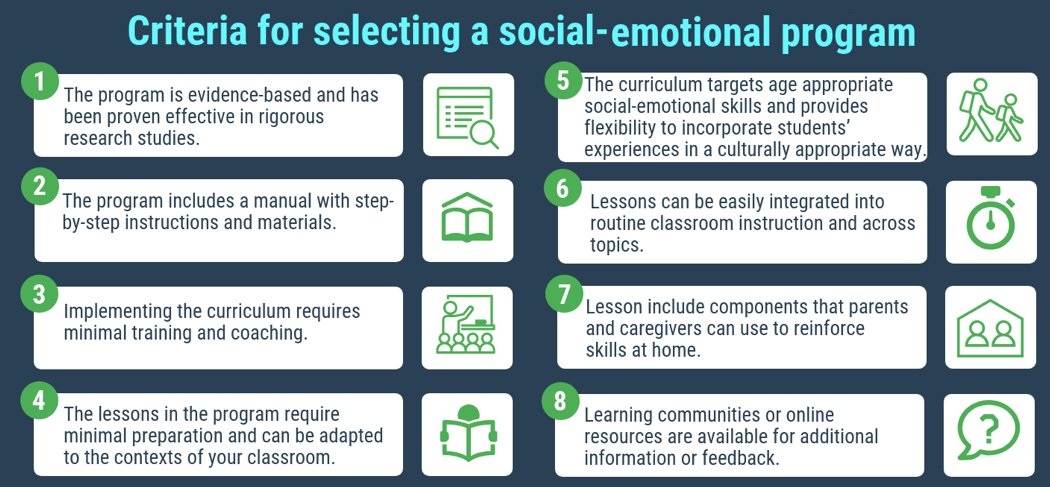In our previous post, Incorporating social-emotional learning (SEL) into everyday academic instruction: How do I do it?, we provided resources and strategies that can be used to incorporate SEL into everyday academic instruction. In this post, we are going to highlight another approach to building students’ social-emotional skills: standalone SEL programs.
What are standalone SEL programs? Rather than incorporating SEL strategies into regular instruction, standalone SEL programs or curricula build students’ social-emotional skills separately from main instructional time. To implement standalone SEL programs, typically teachers or other qualified school staff members, such as counselors or school social workers, receive training in the curriculum and allot time during the school day to teach a series of lessons. Standalone SEL programs are typically targeted toward specific age groups in order to support the development of age-appropriate social-emotional skills.
Standalone SEL programs are helpful tools for teachers who want to build students’ social-emotional skills using uniform language and strategies in the classroom setting. Having a common language among teachers and students can help address, and even prevent, social-emotional challenges that arise in the classroom throughout children’s development. Packaged programs can ease the burden of teachers having to create their own behavioral lesson plans on top of preparing for academics. However, it can be challenging to select among the numerous available programs and identify an appropriate, practical, and effective classroom-wide curriculum that will work for all students and address a range of needs and challenges.
Not to worry! We have simplified the process to help teachers and other practitioners make a well-informed decision when selecting a SEL program. Here’s a helpful, specific checklist that teachers and can use to help identify an SEL program that meshes with existing classroom practices:

SEL programs should match the specific needs and contexts of the school or classroom. Using the list above along with the CASEL resources will increase the likelihood that the SEL program you choose will meet your needs, as well as the strengths and needs of your students. After putting careful consideration into selecting a standalone SEL program, it is important to make sure that program is having the intended consequences on students in your classroom. In our upcoming post, we will explore ways to measure the effectiveness of an SEL program!
More on SEL
- Learn the basics of what SEL is, specific skills students develop when SEL is taught, and how a classroom can be impacted by SEL by reviewing our previous blog post, Helping students help themselves.
- Get tips and resources on incorporating social-emotional learning (SEL) into everyday academic instruction.
- Keep up with all of our posts on SEL by bookmarking our SEL Tag.
Topics: Classroom-based intervention Social-emotional learning
